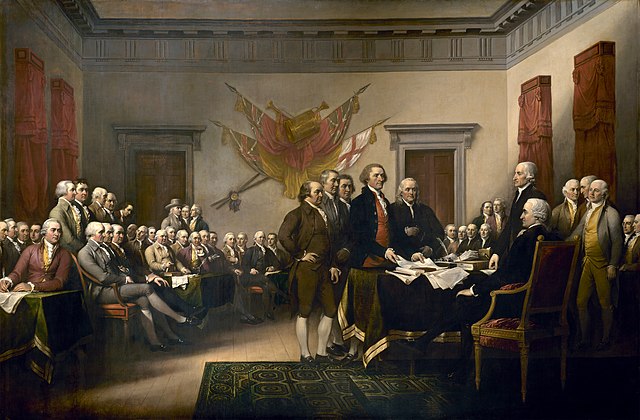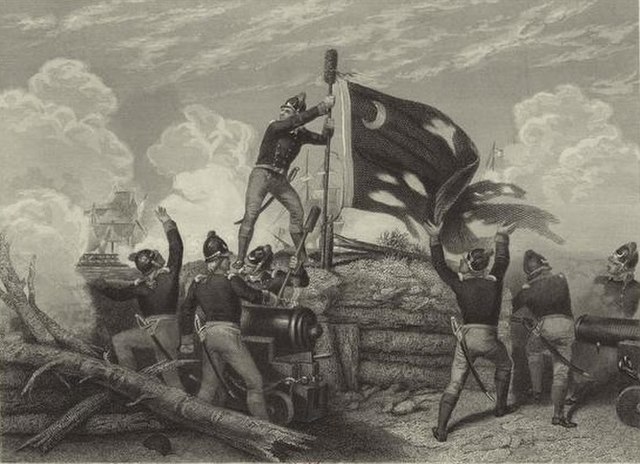Paul Revere was an American silversmith, military officer and industrialist who played a major role during the opening months of the American Revolutionary War in Massachusetts, engaging in a midnight ride in 1775 to alert nearby minutemen of the approach of British troops prior to the battles of Lexington and Concord.
John Singleton Copley, Portrait of Paul Revere. c. 1768–1770, Museum of Fine Arts, Boston
Revere's dentistry tools
The Bloody Massacre Perpetrated in King Street Boston on March 5, 1770, a copper engraving by Paul Revere modeled on a drawing by Henry Pelham, 1770.
20th-century depiction of Revere's ride
American Revolutionary War
The American Revolutionary War, also known as the Revolutionary War or American War of Independence, was a military conflict that was part of the broader American Revolution, where American Patriot forces organized as the Continental Army and commanded by George Washington defeated the British Army.
Clockwise from top left: Surrender of Lord Cornwallis after the Siege of Yorktown, Battle of Trenton, The Death of General Warren at the Battle of Bunker Hill, Battle of Long Island, and the Battle of Guilford Court House
The Committee of Five, who were charged with drafting the Declaration of Independence, including (from left to right): John Adams (chair), Roger Sherman, Robert Livingston, Thomas Jefferson (the Declaration's principal author), and Benjamin Franklin
The British repulse a Continental Army attack at the Battle of Quebec in December 1775
Sergeant William Jasper of the 2nd South Carolina Regiment raises the fort's flag at the Battle of Sullivan's Island in Charleston, South Carolina in June 1776








